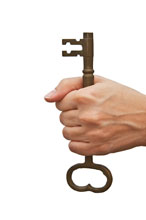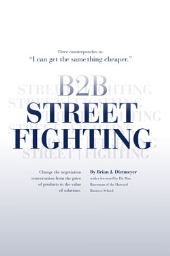 The marketplace is flooded with aggressive, professional buyers, competitors are behaving more irrationally and giving away value, and there are fewer opportunities to make deals. Plus, the deals that are made are longer term. In the face of this, sellers report reasonable sophistication on sales strategy and process as well as account-specific sales strategy and process. But they have virtually no negotiation strategy and process.
The marketplace is flooded with aggressive, professional buyers, competitors are behaving more irrationally and giving away value, and there are fewer opportunities to make deals. Plus, the deals that are made are longer term. In the face of this, sellers report reasonable sophistication on sales strategy and process as well as account-specific sales strategy and process. But they have virtually no negotiation strategy and process.
Strategy is defined as where we want to go, and process is defined as how we get there one deal at a time. Without strategy and process, no less than one embraced internally and cross-functionally aligned across an organization, it's no wonder today's state of negotiation is so dismal.
It's so dismal, in fact, even traditional training doesn't help. Consider this: in the past two years about 50% of respondents have attended traditional negotiation skills training classes, which focus on long lists of tactics and counter-responses. At first glance, we are surprised that more organizations aren't pursuing negotiation training for their sales professionals. But the results point to why it isn't more sought after: traditional negotiation training just doesn't work. Of the roughly 50% that pursued traditional negotiation skills training, 6.8% (only 1.8% higher than the entire pool of respondents) rated themselves afterward as highly effective negotiators. Reports on their level of proactive planning and trading versus conceding also stayed almost flat.
Here's why: negotiation is still perceived as a soft skill - tactics and verbal sparring - that is the domain of sales professionals. Strategic negotiation is far bigger. It encompasses every department that touches sales. Well before any sales professional reaches the negotiation table, no less makes that first sales call, there must be internal agreement on where negotiation should go (strategy) and how sales professionals will get there (process). On a broader level, there should be strategy and process built around responding to key competitors and key customers. One of the problems with traditional negotiation training is that many trainers have incorrectly diagnosed negotiation problems as tactical and therefore prescribed incorrect solutions. From watching over 20,000 business negotiations over 15 years in 46 countries, we know that the diagnosis and prescription for negotiation is more strategic than tactical. Good strategies drive good tactics. In fact, world-class dealmakers need only to be able to answer two questions to effectively blueprint a deal and anticipate what is likely to occur tactically by competitors and customers.
Gaining a competitive advantage can be achieved for firms willing to redefine how they approach negotiation. Request our white paper entitled Negotiation for Sales Effectiveness - Benchmarking Current and Best Practice.






